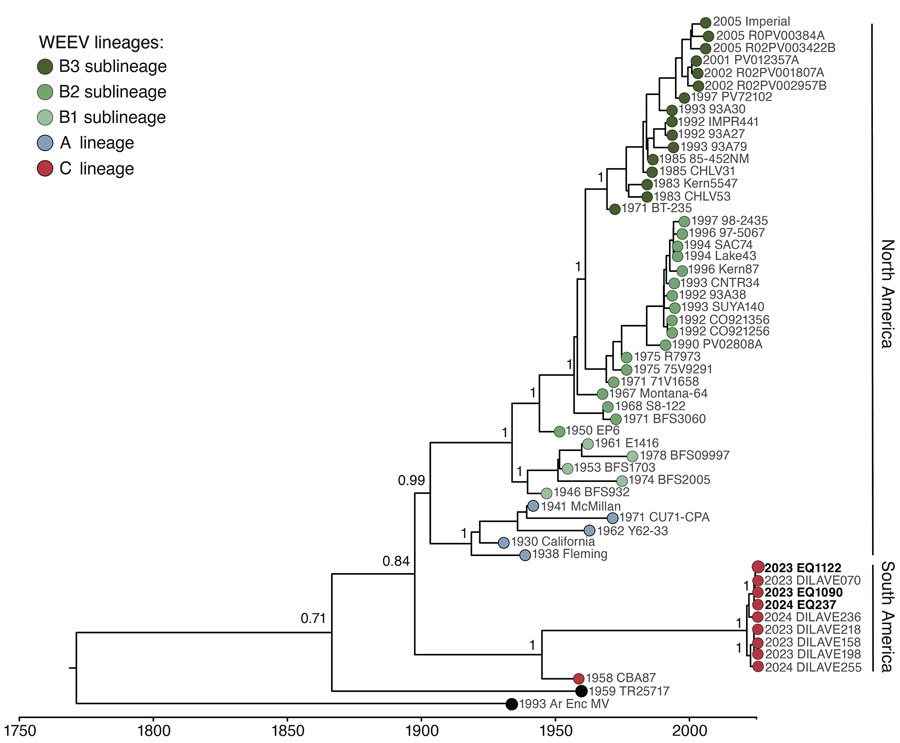Volume 30, Number 9—September 2024
Research
Molecular Epidemiology of Western Equine Encephalitis Virus, South America, 2023–2024
Figure 2

Figure 2. Maximum-likelihood phylogenetic tree of 3 new WEEV strains from Rio Grande do Sul state, Brazil (bold text), and reference sequences. Tip colors indicate WEEV lineage. We used an uncorrelated log-normal relaxed molecular clock model with an exponential rate distribution for generating the time-rooted tree. Posterior probability scores appear next to key well-supported nodes. Dates at key nodes are the estimated dates of divergence from a common ancestor, with Bayesian credible intervals. WEEV, western equine encephalitis virus.
1These senior authors contributed equally to this article.
Page created: July 25, 2024
Page updated: August 22, 2024
Page reviewed: August 22, 2024
The conclusions, findings, and opinions expressed by authors contributing to this journal do not necessarily reflect the official position of the U.S. Department of Health and Human Services, the Public Health Service, the Centers for Disease Control and Prevention, or the authors' affiliated institutions. Use of trade names is for identification only and does not imply endorsement by any of the groups named above.